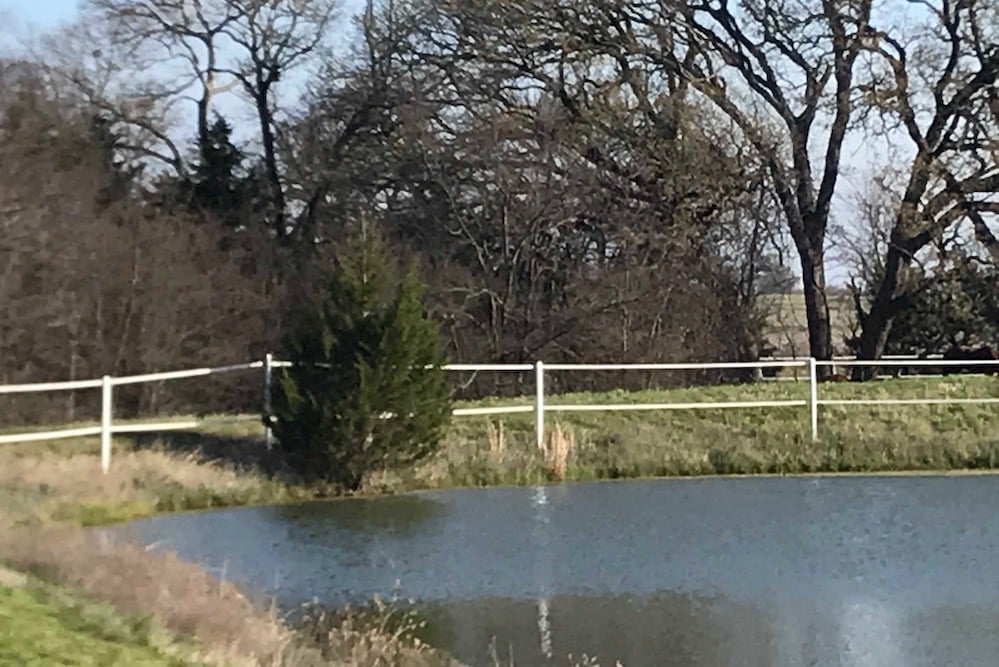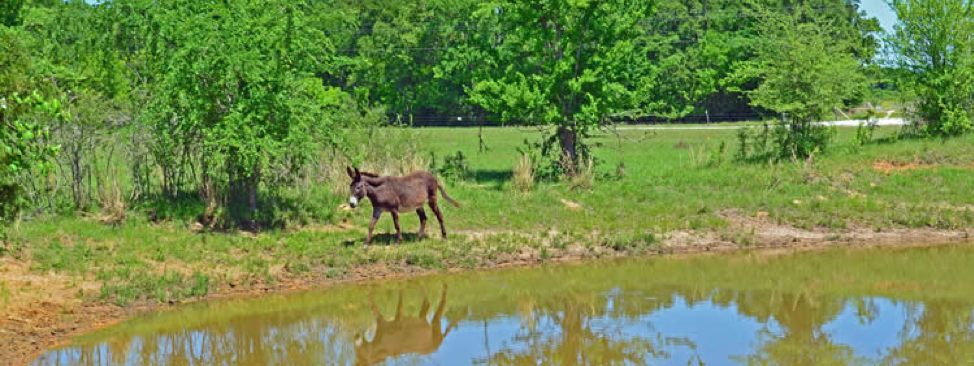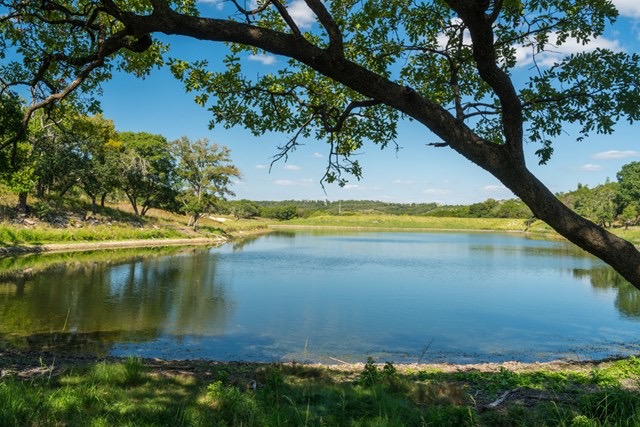Most casual observers of a pond or lake can often notice one distinct feature that sets itself apart from the rest of the scenery: the Dam.
This feature can be a mound of hardened earth or even a concrete structure. From earthen embankments to gravity spillways, dams are a crucial part of a pond or lake’s structure.
A good dam goes a long way towards ensuring your pond's long-term health.
Here's a list of the most common dam problems private landowners face and some suggestions to avoid them.
Trees are at the Root of Many Dam Problems
Trees on your pond dam may look pretty and provide that perfect amount of shade on your favorite fishing spot, but they are actually a major cause of leaky ponds and dam failures.
Tree roots bore through the soil that creates your pond dam, creating thousands of tunnels that intertwine and go from one side of your dam to the other. While the tree is healthy and living it poses no threat of causing the dam to leak, the tree roots occupy the space “sealing the leak.”

However, if the tree ever begins to die the root system begins to decay and no longer fill these voids.
This is where water can fill/ flow through these tunnels compromising the dam’s integrity and potentially cause a leak on the backside of your dam. Consider factors of Planting and Retaining Trees Near Your Fish Pond before making extreme changes.
Erosion is Another Common Dam Problem
Pond dams are inherently at risk of damage brought on by erosion, especially in the early stages after construction. If a pond dam does not have proper protection from surface runoff, it is at risk for deep channels to be cut on both the front and backsides before grass can be established.
This not only creates an eyesore but also potentially causes a portion of your dam to be lower than your spillway.
The right types of aquatic plants may help prevent some erosion problems.

Prevent Livestock from Trampling Down Your Pond’s Dam
Erosion on pond dams is also common on ponds built in areas that are utilized for livestock production or have some type of livestock utilization.
Overgrazing coupled with herd characteristics can spell danger for pond dams. Multiple animals wandering about back and forth grazing after a recent rain can quickly ruin the surface integrity of the dam.
Keep livestock from grazing on the pond dam whenever possible.
Factors that Contribute to Dam Failure
Often there are 3 specific factors that can be the culprit for a dam having issues. 1 or more of these combined issues can be a cause for concern. Pond King has noticed over the years that if 1 of these factors is compromised, it is likely that a pond will have dam issues at some point.
Poor preparation for construction, poor overall construction and or poor maintenance or lack thereof are the key factors for ongoing dam health.
Poor Preparation and Construction Leads to Dam Problems
Poor preparation or construction of a pond dam can lead to ponds that will never hold water correctly. A perennial wet area or the presence of vegetation that needs an abundance of water to survive are quick indicators of a leaky dam.
Poor compaction or improper materials used in the construction of either the dam itself or its footing, the protective barrier between the pond floor and the dam, can cause seeping to occur.
Improper design of an emergency spillway can cause flooding in your pond. This flooding can allow excess flood water to flow over the dam. This action cuts trenches on both the crest and backside of your pond dam.
Depending on the severity of the flood and how long it takes the water level to settle, these trenches could end up lower than your spillway and cause more trouble later on.
Have a Solid Maintenance Plan for Your Dam
As with most projects, proper preparation and maintenance is the key to preventing headaches down the road. Using a professional, experienced pond construction company that knows the importance of quality materials and site preparation will help to take the worries out of your construction process.
Once your pond is built, it is important to keep up with the maintenance of your pond dam. This includes keeping all trees from becoming established, as well as keeping the effects of erosion at a minimum by providing soil coverage until vegetation can be established.
What If Trees are Already Growing on My Dam?
If there are mature trees already established on your pond dam, the best practice is to leave it alone. The root system is already spread throughout the dam and you could potentially cause a problem trying to prevent one.
Contact Pond King for Dam Maintenance Questions
Pond King’s fisheries biologists have experience providing support to pond owners for a variety of needs. Let us know your dam questions and we can help you on the way to better pond enjoyment! Give us a call or contact us today!
See y'all down at the pond!



